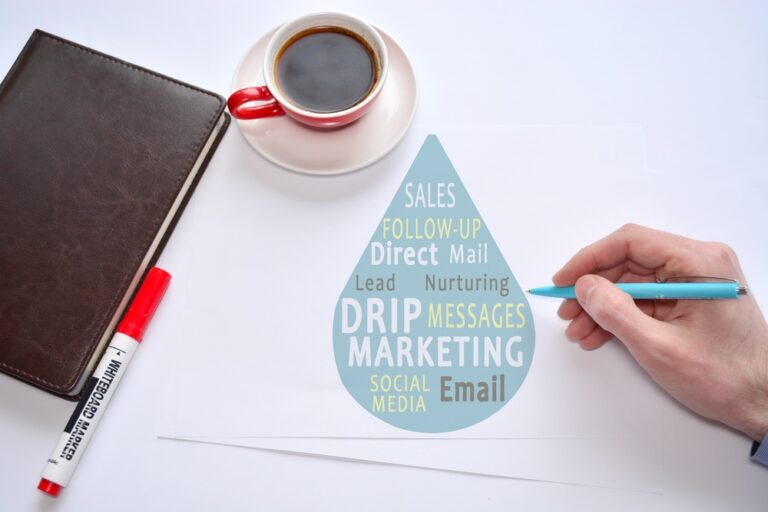With the tools, terms and technologies we're using evolving at an incredibly rapid pace, all of us at Symphony Talent want to keep you informed and up-to-speed as much as we can. Which brings us to today's topic:
Drip Campaigns
So, what are drip campaigns exactly?
In the consumer world, a drip campaign is an automated customer acquisition tool that sends users content about a product or service over time. Essentially, it nurtures prospects (or leads) through to a sale by sending them relevant information at regular intervals based on specific interests or needs determined by their online history.
As a consumer, you've probably already experienced this. If you've done online research when planning a vacation or browsing for a product on Amazon, you'll often begin seeing content (such as emails, recommendations or banner ads on Facebook) directly related to your search. Over time, the messaging and even the offer itself might evolve, based on what you're willing to pay, or when your vacation is scheduled.
This is no accident: marketers know that the more you're exposed to their brand message, the more likely you'll be to follow through on their offer. That's essentially how a drip campaign works - and it's remarkably effective.
How does this relate to talent acquisition?
Job seekers are also "shopping" - for careers - and techniques for engaging them should mirror their consumer experiences. Most of what we in talent acquisition call a "recruiting campaign" is, in fact, a single ad unit driving traffic towards a single job opening or specific career event. The "relationship" ends once the job fair is over or the position is filled. Unfortunately, the opportunity to build a relationship with a great candidate ends with it.
Thanks to a relatively strong economy, job-seeker confidence is at an all-time high, putting candidates squarely in the driver's seat. In a time of sweeping digital transformation, broad "corporate-speak" statements on your career site about your mission, culture or and the people who work there are no longer enough.
According to a recent survey, nearly 60% of candidates want information about a company's culture Ð and 32% are concerned about finding jobs that match their personalities. Like their consumer counterparts, candidates want to be able to make an informed choice. They expect a personalized experience that's relevant, authentic, dynamic and intuitive Ð just like they'd enjoy on Amazon.
Recently, recruiter.com conducted a "live," automated email drip marketing program test with 50 potential job candidates. Less than 20% of them responded to the first targeted email (which would still be considered fairly successful). But here's where the numbers get interesting: the second, more targeted email drew a 26% response rate, and the third, 24%. Even more eye opening is that the fourth and last email had a response rate of 32%. In short, upwards of 80% of all responses happened AFTER the initial email contact.
How could I leverage a drip campaign?
Every candidate touchpoint should be an opportunity to nurture, and drip campaigns are perfect for accomplishing this. Some of your best candidates might not even be thinking about undertaking an active job search. At this point, it's about gaining awareness and a general level of interest. Technology solutions are readily available that allow you to trigger different messages to different types of candidates and roles. And these messages can grow more personalized with every subsequent interaction.
Let's say for example, a candidate visits a job description page, but isn't ready to commit. Use AI to capture data already collected (like an email address) and invite your candidate to subscribe to a newsletter or talent network. You can enter this candidate into a drip campaign that automatically "learns" about them (based on how they interacted) - and sends a predetermined set of emails that are more and more focused. From there it's simple to "follow" your candidate with banner ads on social media and deliver personalized job recommendations.
Social media is another avenue well worth leveraging. Instead of a single "just-in-time" ad on Facebook, use a social media drip campaign that engages your candidate over weeks (or even months) through promoted posts that build your story.
Don't forget the checkout process. An abandoned "job shopping cart" is a waste of time for you and your candidate. However, many potentially great hires can leave you right at the point-of-sale because the application process is intrusive, complicated or disjointed. Ask yourself, would Amazon, Seamless or Macys.com involve purchasers in a protracted, labor-intensive experience? You already know the answer and in most cases, so does your ATS. (ATS data can also help you spot any drop-off hurdles and correct them.)
Think about how your candidates use technology. In most cases, they're on smartphones, so use a mobile-friendly application. If they do abandon the application process, use information already captured to re-engage your candidate through reminders and updates. A follow-up email asking them to "pick up where they left off" can often give them the extra encouragement they need.
Last (but not least), don't keep them in suspense! Just as consumers want to know when their package will arrive, candidates want to know the status of their application. Take your cue from best-in-class consumer checkout experiences.


